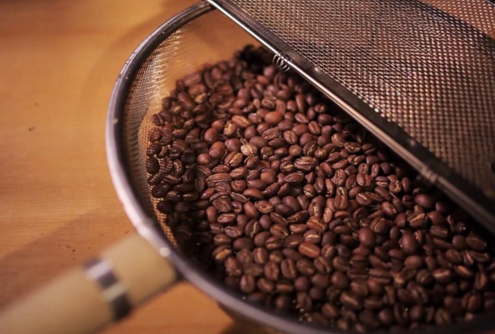What is the difference between coffee beans and female beans? What is the difference between coffee beans and female beans?

For professional baristas, please follow the coffee workshop (Wechat official account cafe_style)
I often hear people say that friends and colleagues go to Indonesia and bring back the local precious, rare and valuable "public bean" coffee powder. But what is a male bean? What is a mother bean? Is there a gender difference in coffee? Answer professional barista communication please follow the coffee workshop (Wechat official account cafe_style)
Of course... There is a good explanation. Let's take a look at why there is such a noun as "public bean" and "mother bean".
Before we talk about the mystery of the sex of male beans and female beans, let's first know a few things. First of all, the coffee tree itself is not divided into male and female trees. In fact, coffee flower is a plant with both male and female organs, belonging to the family Rubiaceae. The coffee bean itself is the core seed of the coffee fruit before it is roasted, and it can grow on its own after falling into the soil, even if only one tree can grow the coffee fruit. Since it is hermaphroditic, there is no difference between male and female trees, and naturally there should be no difference between male and female beans. Furthermore, the original English word of "Gongdou" is "Peaberry" or the abbreviation "PB", but it is not called "Male Beans". The word "Gongdou" is just a common name in Chinese. in fact, he has another name, "Yuandou".
Raw bean VS flat bean
Public beans (round beans) are classified as defective beans in botanical theory for several reasons: one is that coffee beans suffer from diseases and insect pests before bearing fruit, or it may be caused by coffee trees suffering from prolonged drought or malnutrition. In addition, coffee beans at the ends of branches also have a higher chance of forming round beans, which may be due to poor growth due to more opportunities to be exposed. When the normal form of coffee fruit is peeled, there are two coffee nuts (seeds) inside, called "Type-1". This is the most normal form of coffee beans, that is, the mother beans or flat beans in the theory of male and female beans. The other is the elliptical shape of "Type-2", which has only one seed, which is what we call round beans. In fact, there is only a difference in growth form between the two, not a gender distinction. The common name in Chinese is indeed easy to be misunderstood.
Some coffee lovers think that Peaberry beans have a better mellow thickness and charming aroma, and taste sweeter. In addition, because of its relatively scarce production, Peaberry has become a commercial means to be bid up and sold at a high price, but in fact, Peaberry beans are sometimes discarded because they are regarded as defective beans in some producing areas, and Peaberry has little commercial value to them.
It is still difficult to determine whether public beans (round beans) taste better in the end. At present, the common round beans on the market, well-known are Hawaii KONA round beans, Tanzania round beans, Jamaica Zhenglan Mountain coffee round beans and so on. Usually as long as the price of round beans is bound to be high, whether it is worth it or not depends on the ruler in the mind of the drinker.
(this article will be published synchronously to Google BlogSpot)
Important Notice :
前街咖啡 FrontStreet Coffee has moved to new addredd:
FrontStreet Coffee Address: 315,Donghua East Road,GuangZhou
Tel:020 38364473
- Prev

The secret technique of baking-- how to bake your own coffee beans
Professional barista communication Please pay attention to the coffee workshop (Wechat official account cafe_style) people who like desserts always want to make their own cake. similarly, people who like coffee will not be satisfied with buying ready-made coffee beans. Sometimes, drinking the so-called high-quality coffee in a coffee shop has a bitter taste, or infiltrates into defective beans, which makes people feel non-addictive. Sometimes you meet the best beans, but you are afraid to store them.
- Next

Make your own coffee? Gas stove + + hand net to bake coffee, save 300000!
Yes, today let's take a look at how to bake a pot of freshly baked coffee at home. Coffee roasting is the most complex link in coffee making, and the expensive roaster is an insurmountable gap for most coffee lovers. Take the German PROBAT of Little Aijia's 12KG, for example, the price has reached 30W + SoftGirl. Figure 1: specialties with a large price of 30W +
Related
- Beginners will see the "Coffee pull flower" guide!
- What is the difference between ice blog purified milk and ordinary milk coffee?
- Why is the Philippines the largest producer of crops in Liberia?
- For coffee extraction, should the fine powder be retained?
- How does extracted espresso fill pressed powder? How much strength does it take to press the powder?
- How to make jasmine cold extract coffee? Is the jasmine + latte good?
- Will this little toy really make the coffee taste better? How does Lily Drip affect coffee extraction?
- Will the action of slapping the filter cup also affect coffee extraction?
- What's the difference between powder-to-water ratio and powder-to-liquid ratio?
- What is the Ethiopian local species? What does it have to do with Heirloom native species?

